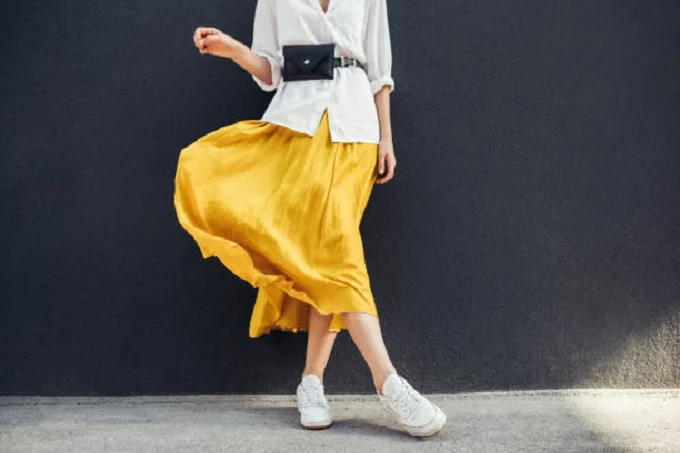Fashion follows a repeating cycle. For example, high-waisted jeans, popular in the 1980s, are making a comeback. Who knows, maybe hats or even top hats may become fashionable in the future. Fashion may often go too far, becoming not just ridiculous but also harmful to one’s health. Certain trends should be left in the past and never return.
These 10 worst fashion trends that should not come back
1. Lotus shoe fashion
In short, a trend for a small female leg originated in China before the 13th century. To halt their development, the girls’ feet were bound with ribbons virtually from birth.
The fingers were distorted and either forced into the foot or entirely dried out at the same time. This trend lasted until the communists took control and stopped it.
2. “Macaroni” fashion
No, this isn’t about a side dish; it’s about a subculture that formed in England in the mid-eighteenth century, when fashionistas who had traveled around Europe started to return to the nation, incorporating all of the current trends into their own style. Young men began to wear colossal wigs topped with a little cap and a feather. Furthermore, the wig may be a third of a person’s height. Such wigs were not only unpleasant but also unsafe. To get the latest stories, install our app here
3. Codpiece
In the 15th century, it was fashionable to show off gen!tals. To accomplish this, men used soft cloth codpieces, which were sometimes replaced by a steel frame. The codpiece was kept in place by buttons or strings and had just one purpose: to artificially enlarge the size of the pen!s to showcase masculinity to an outside viewer. You get a weird look when you add in the recent fashion trend of tight-fitting trousers.
4. Poulaines shoes
Have you ever seen amusing shoes with a tiny pointed snout that resembles a beak in a wizard movie? These are poulaine shoes, which are soft leather shoes with no heels that were popular in the 14th and 15th centuries.
It was thought that the longer the shoe’s toe, the wealthier and noble the owner. Poulaines were unpleasant, so they inserted whalebone in them or braided them so they could walk more or less freely in them. To get the latest stories, install our app here
5. Hobble skirt
Imagine having to go around with your jeans rolled up to your knees all the time. To move, you have to take baby steps. When fashionistas in the 1910s opted to try hobble skirts, they felt the same way. Women had to take extremely little steps in these long, tight skirts, turning a simple walk to the shop into a real endurance challenge.
6. Pannier
The term pannier is derived from the French word “pannier,” which means “basket.” A woman’s skirt was embellished with a frame made of willow or steel rods or whalebone.
The larger the skirt, the nobler its mistress was considered. It got to the point that the girls could not get through the wide doorway. Pannier limited mobility and made the skirt heavy.
7. Starched collars
The world saw many weird phenomena throughout the Victorian period. Collars, for example, were fashionable, and they were starched to the point of not bending. It was one of the most deadly fashion components because, in the event of an uncomfortable fall, the collar converted into a type of loop that suffocated a person to death.
The pointy corners of the collar, which were highly starched and made like blades, were no less threatening. To get the latest stories, install our app here
A man wearing such a collar has been known to slip and fall, with the sharp edges of the collar catching in his throat. Although he did not die, he did have scars on his neck.
8. Chopine
Chopines might easily kill their owner if were Poulaines merely ridiculous-looking shoes that restricted mobility. The shoe’s major feature was a thick cork or wood sole that could reach a height of one meter.
It was very difficult to walk in such shoes, and the stride became sloppy and wobbly, forcing chopine-wearing females to depend on servants at all times. Chopine followed the same rule as poulaines and panniers: the greater the rank, the more aristocratic the individual.
9. Bombast
Bombast was padding made of cotton, wool, horsehair, or even sawdust and was intended to visually enlarge natural forms, including the shoulders, chest, and abdomen. Simply put, the bombast was something like a corset that gave volume to the body. Women most often enlarged their arms, while men preferred to stick out their stomachs or calves. Sometimes the bombast inflated the body so much that the person who followed this fashion could hardly move independently.
10. Powdered wigs
It’s no surprise that the increase in wig-making and wig-wearing occurred with the breakout of syphilis in the late-16th century. To get the latest stories, install our app here
Long hair symbolized riches and high social standing for both men and women in the Middle Ages—only the wealthy could go about their days without being bothered by their long locks. As a result, the more follicly challenged members of the upper and middle classes (predominantly those with the terrible venereal illness) began to wear perukes, wigs made of horse, goat, or human hair. To disguise the nasty odours associated with syphilis, they were covered with scented lavender or orange powder.
